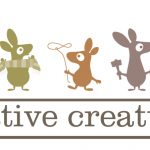AHA! and Ka-ching!!
The ‘insight’ word still remains big news amongst most corporates in most categories, right across the world. But is it over-rated? Do we run the risk of over-estimating its value? Or at the very least, are we confused about its true role in life?!
The primary role of insight is not to get a deeper understanding of consumers or customers, but more to act as a springboard between consumers/customers and solutions that will make money for companies. The former is simply a route to the latter. If we spend too much time intellectualising and insisting that insights must be “deep, meaningful, loaded with unresolved tension, emotional, more powerful than facts or observations, etc. etc.” we are probably missing the point. There is no doubt that insight must always resonate with the target market and therefore provide us with the AHA! However, we also need to ensure that any so-called insights provide us with the magical sound of an old fashioned till register – the Ka-ching!!
Without the Ka-ching!!, nobody will ever be too interested in the AHA! Why would they be?
So here are 5 practical tips to ensure that the Ka-ching!! always receives as much attention as the AHA!
1) Start with the end.
Before you begin the quest for insight, make sure that all the key stakeholders are clear and in agreement as to what they intend to do with the insight once it has been discovered. Is the insight going to be used to drive positioning, innovation, communication, for example? If you go into a fancy dress shop without being told what the fancy dress theme is, what exactly are you going to buy in the fancy dress shop? If you know that the theme is ‘Kings and Queens’, your mission has a clear purpose! You know what you are looking for and what you are going to do with it. This brings both direction and energy.
2) Good-looking!
Make sure that everybody involved in the hunt for insights understands what a ‘good-looking’ insight actually looks like. Display on the walls examples of great insights that have led to ground breaking strategies and executions. Discuss the DNA of those insights, dissect them and agree which bits have made them great. If you do not know what you are looking for, you probably will not find it. In many companies, the insight is word is used, yes, but often it is overused, mis-used and abused!
3) Split your brain in two.
Half your brain should always be operating in AHA! mode. Will the insight resonate with the target market? Is it really important to them? Will consumers be nodding their heads vigorously in agreement? But importantly, always make sure that all the stakeholders reserve half of their brain’s space and capacity for the Ka-ching!! Everybody should always be on the look out for the commercial opportunities that the insight might spawn…….and this moment could come at any time, any where. Insights with the Ka-ching!! factor do not always arrive neatly packaged at 9.38am on a Tuesday. Always have one eye on the consumer and the other on the commercial opportunity, when developing insights.
4)Chicken and Egg:
Forgive and applaud people who confess to having ideas before the insight has been polished. This is not a crime. It really is OK to develop both insights and ideas in tandem. Why not begin with a piece of interesting science or technology and then work back to the insight? This is absolutely fine as long as you do check to see if a powerful insight does underpin the science/technology, rather than retr0-fitting the insight in order to remain politically correct in the corporate environment. It is human nature to get ideas before insights. Embrace this.
5)Babysit should be all one word:
Ensure that somebody in the team assumes the role of insight guardian. Once an insight, full of AHA! and Ka-ching!!, has been unearthed, the most depressing thing on earth is to see it disappear into the ether, under-used, mis-used or simply not used by those people who wanted to develop ground-breaking ideas in the first place. Insights are fragile things and need to be nurtured from cradle to grave. The stakeholders responsible for insight development and those responsible for applying the insight commercially need to be joined at the hip.
So, in summary, let’s always remember that ideas always trump insights. The AHA! is important, but it is the Ka-ching!! that pays the bills, so always make sure that as much energy is spent on the search for the latter as is spent on developing the former.





